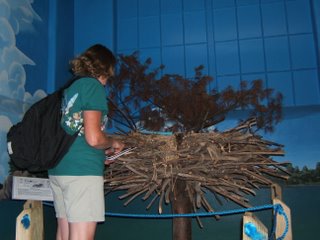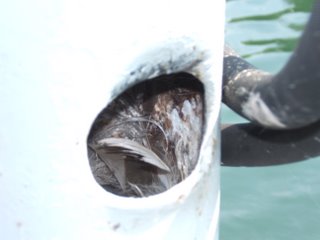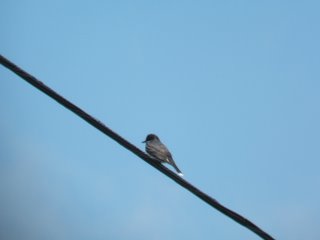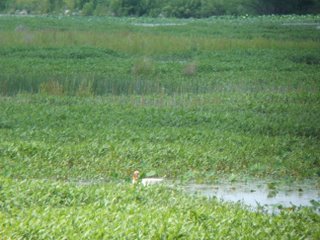
They say, "the early bird catches the worm;" we were out bright and early back at the pond on South Bass hoping to see some more species. We saw the Black-crowned Night Herons again - clearly one was a juvenile - and watched the Wood Duck youngsters waddle around lily pads. We did a lot of listening this morning, trying to identify birds by their vocalizations. Many of our discussions were centered around distinguishing various species of woodpeckers from one another. We added four new birds to our list - Brown-headed Cowbird, American Goldfinch, Northern Flicker, and Red-bellied Woodpecker. Just before lunch, we ventured upstairs in Stone Lab's research building to see the "skins," the collection of preserved bird specimens. Some of the specimens had tags on them that were dated back into the 1920's!
With just a few minutes before Al took us back to Gibraltar, everyone also had a chance to see the eagle nest on display next door at the ODNR Visitor's Center.

One of the neatest sightings was of a Tree Swallow nest in the post on the end of one of the research boats. Tree Swallows are secondary cavity nesters; they don't carve out their own nest cavities, but rather use existing ones. According to Captain Al, Tree Swallows have nested here for three years. They follow the boat wherever it goes, from the research dock, to Gibraltar, even to Kelley's and Rattlesnake Islands. Although my picture doesn't show it well, there are three nestlings inside. It's a good thing there is an endless supply of mayflies for lunch!

As for the birding tips of the day:
When birding (and you don't know what the bird is), here's what to do:
1. DON'T TAKE YOUR EYES OFF THE BIRD! Study the bird for as long as you can before it flies away.
2. Pay attention to the basic characteristics: size, shape, color, markings, behavior, vocalizaiton, and habitat
3. Write down as much as you can after the bird has left; inevitably you will forget a distinguishing characteristic if you fail to record it!
Do you know the universal bird call?
It's called "pishing." If you want to call birds (so that they call back to you), you should pish and then squeak. This is especially useful when in dense vegetation. If you are really good at making sounds, then imitate a Screech Owl. It will startle most song birds; they will respond vocally or visually (thus exposing themselves) because they want to find out more about where the owl is.
As for tomorrow. . . we're heading back to mainland Ohio for some birding at Crane Creek State Park, Ottawa National Wildlife Refuge, and Metzger Marsh. Of course we'll also check out that birds that hang around Tofts Ice Cream.









